Developing game-changing ryegrass
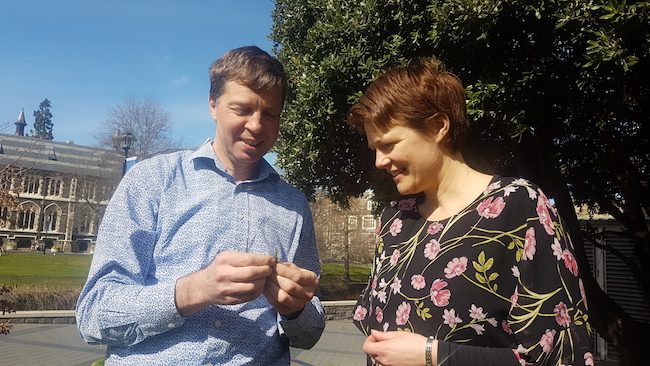
Ryegrass is one of New Zealand's most important agricultural plants: the main source of food for the country's livestock. However, when it flowers, it is not as nutritious. Associate Professor Richard Macknight and Dr Lynette Brownfield now have funding to develop a ryegrass that doesn't flower on-farm.
Visit the story on Otago University news, Farmer's Weekly, RNZ news, and the Otago Daily Times.
Richard and Lynette, as part of the Society of Plant Biologists, have also voiced their concern about New Zealand's current GM laws, as featured on Otago University news and Newsroom.co.nz.
How kiwi and moa grow wings that can't fly
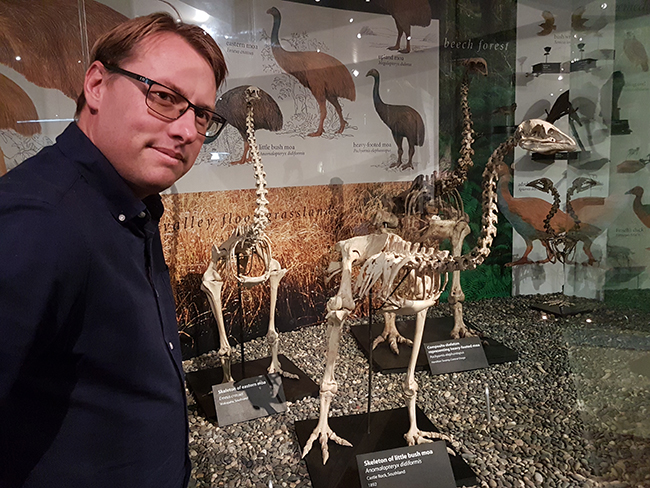 Associate Professor Paul Gardner, along with colleagues from Harvard University, has discovered new genetic evidence of what makes ratite birds, like the kiwi and moa, flightless. All the genes in these birds that code for wing development are entirely functional; if you put those genes in another bird, it would grow a pair of wings that could be used to fly. So what stops this happening in kiwi and moa?
Associate Professor Paul Gardner, along with colleagues from Harvard University, has discovered new genetic evidence of what makes ratite birds, like the kiwi and moa, flightless. All the genes in these birds that code for wing development are entirely functional; if you put those genes in another bird, it would grow a pair of wings that could be used to fly. So what stops this happening in kiwi and moa?
Visit the story on Sciblogs website, RNZ news, Newshub, stuff.co.nz, and the NZ Herald.
Detecting parasites in poo
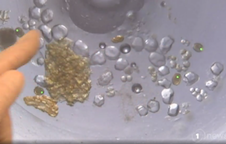 Professor Kurt Krause comments on groundbreaking parasite-detection technology developed by Dunedin company Techion for use in human health management. Originally used to test sheep poo, these advances are based on the inventions of Dr Stephen Sowerby, developed at the Otago Department of Biochemistry and funded by the Bill and Melinda Gates Foundation.
Professor Kurt Krause comments on groundbreaking parasite-detection technology developed by Dunedin company Techion for use in human health management. Originally used to test sheep poo, these advances are based on the inventions of Dr Stephen Sowerby, developed at the Otago Department of Biochemistry and funded by the Bill and Melinda Gates Foundation.
Visit the story on the TVNZ website
Diet and genes in gout
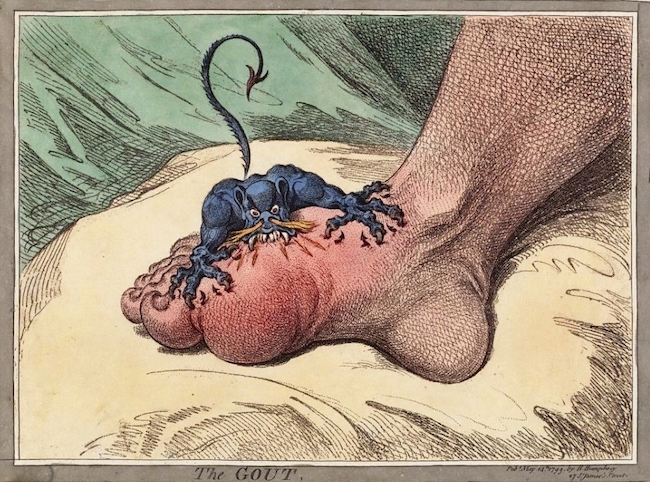 Gout, a painful disease of the joints, is traditionally thought of as an affliction of wealthy old men who overindulge in alcohol and rich foods.
Gout, a painful disease of the joints, is traditionally thought of as an affliction of wealthy old men who overindulge in alcohol and rich foods.
Dr Tanya Major and Professor Tony Merriman have been crunching the numbers and finding out that genes are much more important than dietary patterns to people's risk of developing gout.
Watch Dr Major talk about this research on the TVNZ website here
You can also watch Professor Merriman talk to the Royal Society of New Zealand about how his research team uses genetics to understand the causes of gout:
Tony and his student Anezka Hoskin have also been investigating genetic variants specific to Māori and Pacific people, but very rare in other populations, to find out if they might have a role in type 2 diabetes. You can read more about this research in an article published in the NZ Listener, and the Gisborne Herald.
Making micro-stomachs for cancer
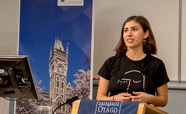
Yasmin Nouri, a student in Professor Parry Guilford's group, won the Master's category of the 2018 University of Otago three minute thesis competition with this talk about making micro-stomachs to research a prevention for gastric cancer.
Freeze-thaw worms
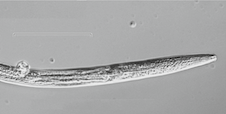
Associate Professor Craig Marshall explains some recent research on reviving 40,000 year-old frozen nematode worms, and talks about his own research into nematodes from Antarctica that freeze and thaw every winter. (Photo: Doklady Biological Sciences)
Visit the story on the RNZ website
Revealing the mystery of New Zealand's glowworm
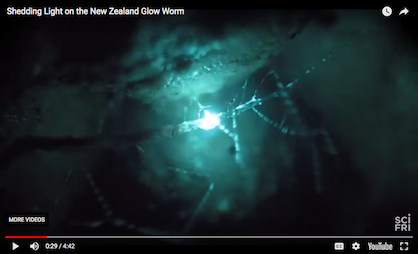
Woah! - Animals that make light! How do they do that? Dr Miriam Sharpe and Professor Kurt Krause explain their research on what makes glowworms glow on National Public Radio's Science Friday in the USA, and on New Zealand media.
Visit the story on the Science Friday website
Scientists make illuminating discovery about Kiwi glowworms. One News, TVNZ
Mystery behind glowworm's glow revealed. Newshub, TV3
Unlocking the secret of the glowworm's shine. Afternoons, RNZ
Star's mutant cancer-causing gene discovered by Otago scientist

Twenty-one years ago, Professor Parry Guilford discovered the faulty gene that caused many members of a Tauranga family to die from stomach cancer.
Members of this family can now be tested for the mutation, and if they have it, they can choose to have their stomachs removed to prevent developing cancer.
Singer Stan Walker is a member of this family, and the discovery that he has this mutation and his subsequent choices were recently shared in the TV3 documentary 'Stan: His Inspirational Journey' (to watch you will need to log in - see if you can spot some footage of a very young Professor Guildford at the lab bench).
Visit the story on the Otago Daily Times website and on Stuff.co.nz
Watch Professor Guilford explain how cancer works, and where his research is going next, to the Cancer Society:
How do you sequence a genome?
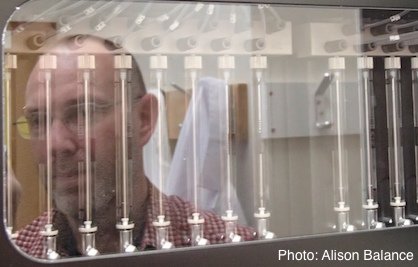
Humans have more than 3 billion DNA bases in each of their cells, containing a full set of instructions on how to build a body. How do you find out the entire sequence of this genome? Professor Peter Dearden, Dr Becky Laurie, Dr Aaron Jeffs and others talk to RNZ National's Our Changing World about how to sequence a genome.
Visit the story on the RNZ website
Javascript must be enabled to play this media.
How queen bees control their worker fertility
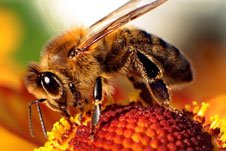
Bee hives have evolved to have a complex, fascinating social hierarchy, and although we know about Royal Jelly and pheromones, how exactly does the queen bee control the fertility of the rest of the hive? Research into the molecular mechanism behind this control by Professor Peter Dearden and Drs Elizabeth Duncan and Otto Hyink has been profiled on BBC Radio 4's "Inside Science" programme.
Visit the story on the BBC's iplayer
Javascript must be enabled to play this media.
Squid that glow using crystals
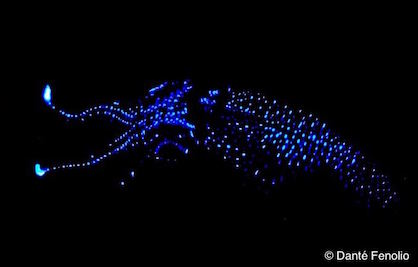
The Japanese firefly squid makes intense blue light to distract its predators, and is considered a great delicacy in Japan. Dr Miriam Sharpe talks about her research into the crystals that the squid uses to produce the light, and Professor Kurt Krause talks about bioluminescence - light made by living organisms - on RNZ National's Our Changing World.
Visit the story on the RNZ website
Javascript must be enabled to play this media.
Genetics of truffle-like fungi
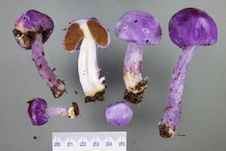
Some fungi, like mushrooms, have umbrella-like caps, others, like truffles, have a lumpy potato-like appearance. Still others resemble truffles, but strangely are more closely related to mushrooms than truffles. Dr Chris Brown, along with collaborators in the Botany Department, are sequencing the DNA from truffle-like and pouch fungi to find out how they have evolved. They talk to RNZ National's Our Changing World about their research.
Visit the story on the RNZ website
Javascript must be enabled to play this media.
Battling breast cancer at the molecular level
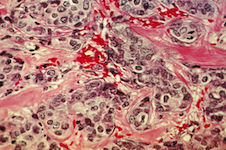
Dr Anita Dunbier's research into breast cancer has shown that immune cells can play a `Jekyll and Hyde' role, either attacking and destroying a tumour or helping it to grow.
Visit the story on the Otago Daily Times website
Lipoprotein little a … a high risk for heart disease

Research into lipoproteins, molecules that carry fats and cholesterol in the blood, is showing us new ways to develop drugs to treat heart disease. Professor Sally McCormick tells us more about a type of lipoprotein that she has been studying in detail.
Visit the story on the RNZ website
Javascript must be enabled to play this media.
Harnessing photosynthesis for energy production
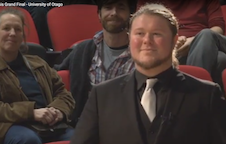 Tim Crawford, a former PhD student in Professor Julian Eaton-Rye's research group, made the finals of the 2012 University of Otago three minute thesis competition. He talks about his research into some of the molecules that are involved with photosynthesis, and how such research could eventually be used to harness photosynthesis for industrial energy production.
Tim Crawford, a former PhD student in Professor Julian Eaton-Rye's research group, made the finals of the 2012 University of Otago three minute thesis competition. He talks about his research into some of the molecules that are involved with photosynthesis, and how such research could eventually be used to harness photosynthesis for industrial energy production.
